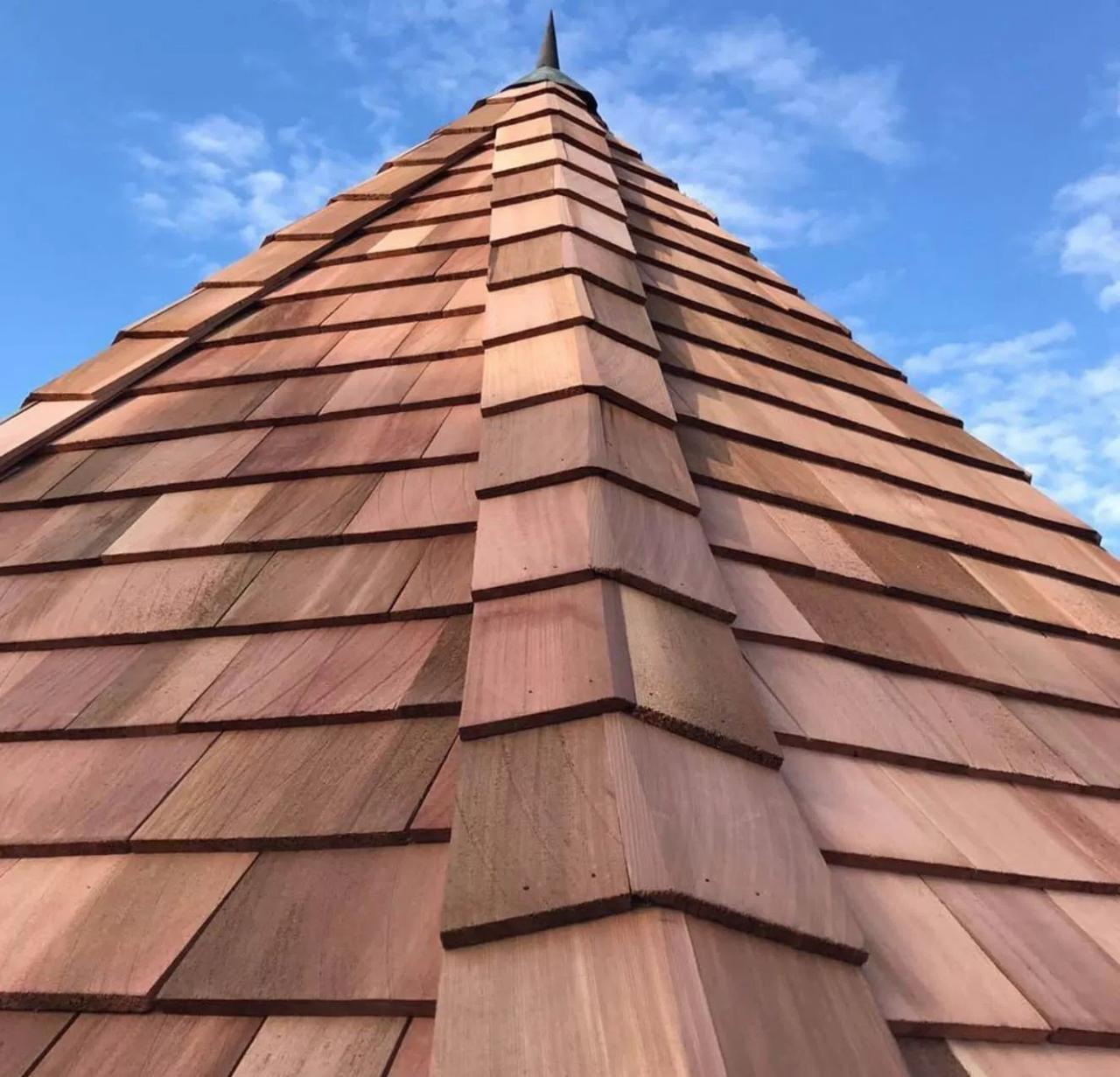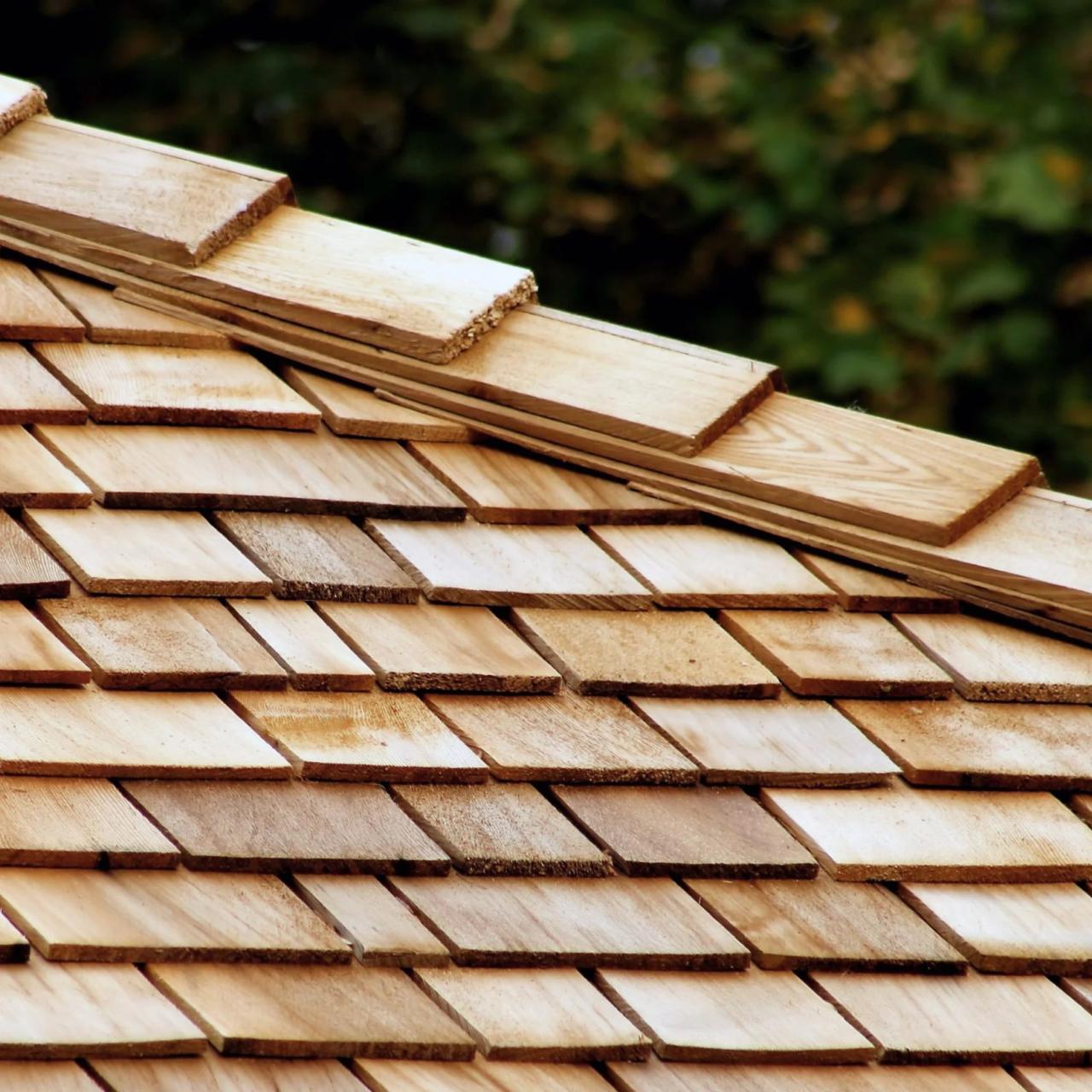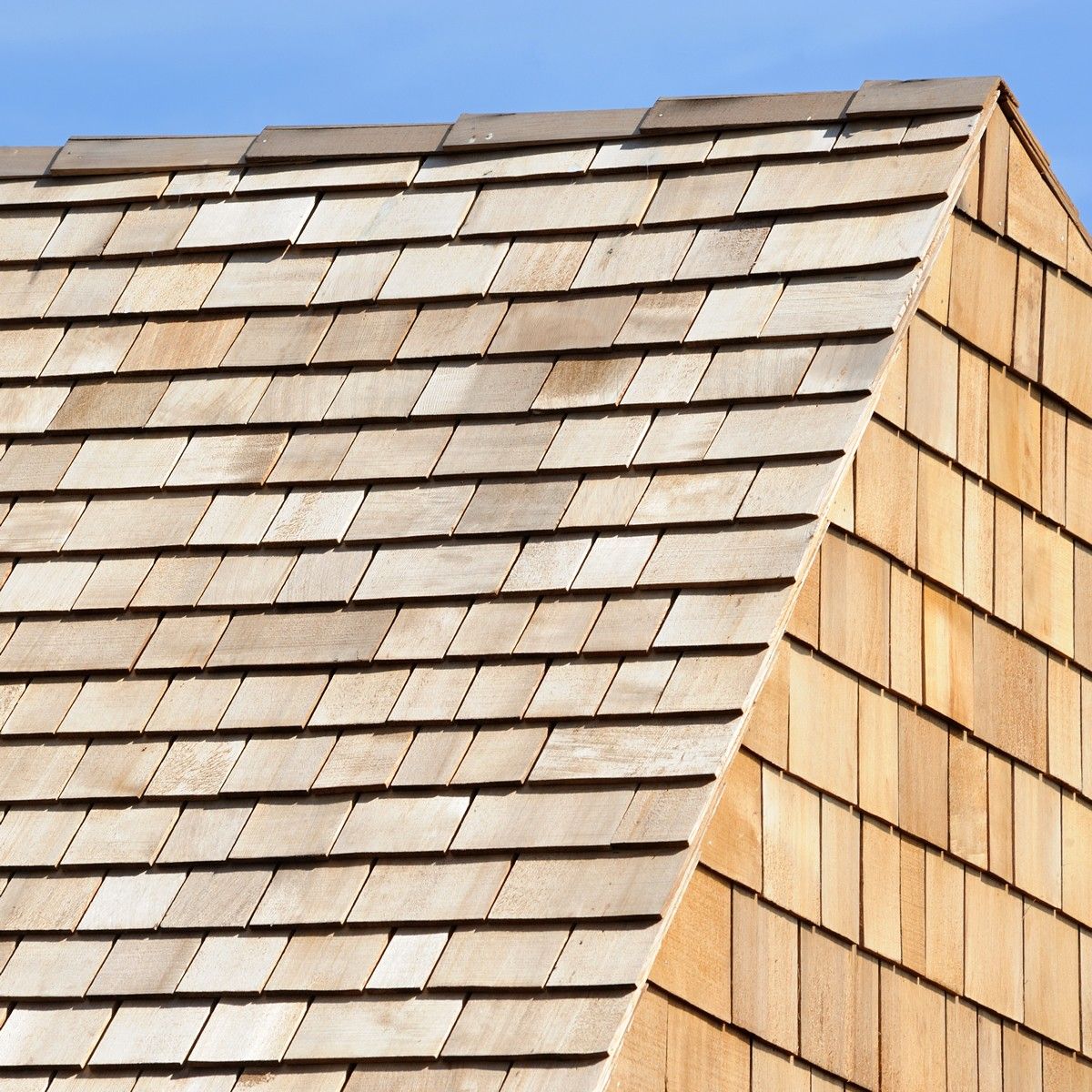NuCedar shingles offer a compelling alternative to traditional cedar and asphalt roofing. These innovative shingles combine the aesthetic appeal of natural wood with enhanced durability and performance characteristics. This guide delves into the composition, installation, maintenance, and long-term value of NuCedar shingles, providing a comprehensive overview for homeowners and contractors alike. We’ll explore everything from their manufacturing process and environmental impact to their cost-effectiveness and aesthetic versatility, equipping you with the knowledge to make an informed decision about your next roofing project.
From fire resistance ratings and lifespan comparisons to detailed installation guides and maintenance tips, we’ll cover all aspects of NuCedar shingles. We’ll also examine their aesthetic appeal, exploring how their color variations and textures complement different architectural styles. Finally, a thorough cost analysis, including initial investment, ongoing maintenance, and long-term value, will help you understand the true return on investment offered by this innovative roofing solution.
NuCedar Shingle Composition and Manufacturing
NuCedar shingles offer a durable and aesthetically pleasing alternative to traditional wood shingles, leveraging advanced manufacturing techniques to achieve a balance between natural appearance and enhanced performance. Understanding their composition and manufacturing process reveals key aspects of their longevity and environmental impact.
NuCedar shingles are manufactured using a proprietary process that combines wood fibers with a resin binder. This blend is then formed into individual shingles, mimicking the profile and texture of natural cedar. The specific composition varies depending on the shingle line and desired properties, but generally involves a significant percentage of recycled wood fibers, contributing to a sustainable manufacturing process. The resin binder provides crucial water resistance and dimensional stability, preventing warping and cracking that can plague traditional wood shingles.
NuCedar Shingle Composition Compared to Alternatives
The composition of NuCedar shingles differs significantly from both traditional cedar and asphalt shingles. Traditional cedar shingles, while aesthetically pleasing, are susceptible to rot, insect infestation, and require significant maintenance. Asphalt shingles, on the other hand, are relatively inexpensive and readily available, but often lack the natural aesthetic appeal and can degrade more quickly under harsh weather conditions. NuCedar shingles aim to bridge this gap by offering the visual appeal of cedar with enhanced durability and longevity comparable to, or exceeding, that of asphalt. The use of recycled wood fibers also positions NuCedar as a more environmentally responsible option compared to the petroleum-based components of many asphalt shingles.
NuCedar Manufacturing Process
The NuCedar manufacturing process begins with the sourcing of wood fibers. These fibers, often sourced from recycled wood products, undergo a rigorous cleaning and processing stage to remove impurities and ensure consistent quality. This recycled content minimizes the environmental impact of raw material sourcing. The cleaned fibers are then blended with a specially formulated resin binder, creating a homogenous mixture. This mixture is then formed into individual shingles using high-pressure molding techniques, which precisely replicate the texture and profile of traditional cedar shakes. The shingles are then cured to ensure the resin binder fully sets, creating a durable and weather-resistant product. Finally, they undergo quality control checks before packaging and distribution.
Environmental Impact of NuCedar Shingle Production
The environmental impact of NuCedar shingle production is a significant consideration. The use of recycled wood fibers significantly reduces the demand for virgin timber, conserving forest resources. The manufacturing process itself generates relatively low levels of waste compared to other roofing materials. Waste management practices typically involve recycling non-reusable materials and responsible disposal of any remaining byproducts. However, the energy consumption during manufacturing and transportation should be considered, along with the potential environmental effects of the resin binder’s components. While NuCedar strives for sustainability, a comprehensive life-cycle assessment would be necessary to fully quantify the overall environmental footprint. Comparisons with other roofing materials like asphalt shingles, which are derived from petroleum products, demonstrate the potential environmental advantages of NuCedar’s recycled wood fiber composition.
NuCedar Shingle Properties and Performance

NuCedar shingles boast a unique combination of properties that contribute to their superior performance and longevity compared to traditional asphalt or even natural cedar shingles. Their engineered composition and manufacturing process result in a product that offers excellent fire resistance, exceptional moisture resistance, and a long lifespan, all backed by a robust warranty. This section will detail these key performance characteristics.
Fire Resistance Rating and Achievement Methods
NuCedar shingles achieve a high fire resistance rating through a combination of factors inherent in their composition and manufacturing. The specific rating varies depending on the local building codes and testing standards applied. However, the key elements contributing to this fire resistance include the incorporation of fire-retardant additives within the shingle’s composite material and the shingle’s density and thickness. The dense composition makes it harder for flames to penetrate and spread across the surface, while the fire-retardant additives actively inhibit combustion. Furthermore, the manufacturing process ensures consistent material density and distribution of these additives, contributing to a uniform level of fire protection across the entire shingle. This differs significantly from traditional wood shingles, which are inherently more flammable, and asphalt shingles, whose fire resistance relies primarily on surface treatments that can degrade over time.
Lifespan and Warranty Comparison, Nucedar shingles
NuCedar shingles are designed for exceptional longevity. While the exact lifespan depends on factors such as climate and installation, NuCedar typically offers a longer lifespan than standard asphalt shingles. Asphalt shingles often have a lifespan of 15-30 years, depending on the quality and the climate, while NuCedar shingles frequently boast a lifespan exceeding 30 years, and sometimes even 50 years under ideal conditions. This increased longevity is reflected in the warranty provided by the manufacturer. NuCedar typically offers a significantly longer warranty than asphalt shingles, often providing a 50-year warranty, reflecting the increased confidence in their product’s durability. A direct comparison with natural cedar shingles is more complex, as the lifespan of natural cedar varies significantly based on the species, climate, and maintenance. However, NuCedar’s engineered composition provides a more predictable and often longer lifespan than natural cedar, mitigating the risks associated with rot and insect damage.
Moisture Damage Resistance
NuCedar shingles exhibit superior resistance to moisture damage compared to other shingle types. Their composite structure is designed to minimize water absorption, thus significantly reducing the risk of rot and mildew. This resistance is a crucial factor in ensuring the long-term durability and aesthetic appeal of the roofing system. The low water absorption rate is a direct result of the material composition and manufacturing process, creating a dense, non-porous surface that repels water. This is in stark contrast to natural cedar shingles, which are inherently porous and susceptible to water absorption, leading to rot and decay. Asphalt shingles, while less porous than cedar, are still susceptible to moisture damage, particularly when the surface coating degrades over time.
| Shingle Type | Water Absorption (%) |
|---|---|
| NuCedar | 0.5 – 1.0 |
| Asphalt | 2.0 – 4.0 |
| Cedar | 8.0 – 15.0 |
NuCedar Shingle Installation and Maintenance

NuCedar shingles, known for their durability and aesthetic appeal, require proper installation and ongoing maintenance to ensure a long lifespan and protect your investment. This section details the step-by-step process for installation, highlighting crucial safety measures, and provides best practices for maintaining your NuCedar roof. Understanding these procedures will help homeowners maximize the performance and longevity of their NuCedar shingle roofing system.
NuCedar Shingle Installation
Proper installation is paramount for optimal performance and longevity. This involves careful preparation, adherence to manufacturer guidelines, and attention to detail throughout the process. Improper installation can lead to premature shingle failure, leaks, and costly repairs.
- Preparation: Begin by inspecting the existing roof deck for any damage, ensuring it’s structurally sound and free of debris. Repair or replace any damaged areas before proceeding. Ensure proper ventilation is in place to prevent moisture buildup. Gather all necessary tools: hammer, roofing nails, measuring tape, chalk line, safety harness, and appropriate personal protective equipment (PPE) including gloves, safety glasses, and hard hat.
- Underlayment Installation: Install a high-quality underlayment according to the manufacturer’s instructions. This provides an extra layer of protection against water damage. Overlapping the underlayment is crucial to prevent water penetration.
- Starter Course: Begin installation by securing a starter course of shingles along the eaves. This provides a straight and even base for subsequent rows.
- Shingle Installation: Install subsequent rows of shingles, adhering to the manufacturer’s recommended overlap and nail placement. Ensure each shingle is securely fastened with the correct number of nails. Use a nail gun for efficiency and consistency.
- Ridge and Hip Installation: Install ridge and hip shingles according to the manufacturer’s specifications. These areas require special attention to ensure proper sealing and weather resistance.
- Final Inspection: Conduct a thorough inspection of the entire roof to ensure all shingles are properly installed, sealed, and securely fastened. Address any issues immediately.
NuCedar Shingle Maintenance
Regular maintenance significantly extends the lifespan of your NuCedar shingles. This involves routine cleaning and prompt attention to any damage. Neglecting maintenance can lead to premature deterioration and costly repairs.
- Regular Cleaning: Clean your roof at least once a year, preferably in the spring or fall. Remove debris such as leaves, branches, and moss using a soft brush or blower. Avoid using high-pressure washers, as they can damage the shingles.
- Moss and Algae Removal: For moss and algae growth, use a specialized roof cleaning solution designed for wood shingles. Always follow the manufacturer’s instructions carefully. A stiff brush may be needed to remove stubborn growth.
- Repairing Damaged Shingles: Repair or replace any damaged or missing shingles promptly. Use matching shingles and ensure proper fastening and sealing to prevent leaks.
- Gutter and Downspout Maintenance: Keep gutters and downspouts clean and free of debris to prevent water damage to the roof and foundation.
NuCedar Shingle Installation Difficulty Compared to Other Roofing Materials
The installation difficulty of various roofing materials varies significantly based on factors such as experience, skill level, and the complexity of the roof design.
- NuCedar Installation Difficulty: NuCedar shingle installation requires a moderate level of skill and experience. While straightforward for experienced roofers, it demands precision in shingle placement, nailing, and sealing to ensure proper weather resistance. The weight of the shingles and the need for careful handling also adds to the complexity.
- Asphalt Installation Difficulty: Asphalt shingle installation is generally considered easier than NuCedar, largely due to the lighter weight and simpler installation techniques. It requires less precision in placement and is more forgiving of minor errors.
- Cedar Installation Difficulty: Natural cedar shingle installation presents a similar level of difficulty to NuCedar, demanding precision and experience. However, natural cedar can be more prone to splitting and warping, adding complexity to the installation process.
NuCedar Shingle Aesthetics and Design

NuCedar shingles offer a diverse range of aesthetic options, allowing homeowners to enhance the curb appeal of their properties while complementing various architectural styles. The natural beauty of wood, combined with NuCedar’s manufacturing process, results in a roofing material that is both durable and visually appealing. The selection of colors and styles available allows for considerable creative freedom in achieving a desired look.
NuCedar Shingle Color and Style Variety
NuCedar shingles are available in a variety of colors designed to mimic the natural variations found in wood. These colors range from subtle earth tones to richer, more dramatic shades. The color consistency within each shingle and across batches is carefully controlled to ensure a uniform appearance across the entire roof. Specific color options and their availability may vary depending on regional distribution and current product offerings. Beyond color, the shingles are offered in different profiles, such as 3-tab and dimensional styles, which affect the overall visual texture and depth. The dimensional shingles, in particular, provide a more complex and visually interesting roof surface.
NuCedar Shingles on Different House Styles
The appearance of NuCedar shingles varies depending on the architectural style of the house. On a Victorian home, the rich, deep tones of NuCedar shingles, perhaps in a dark brown or deep grey, would complement the intricate detailing and ornate trim. The texture of the shingles would create interesting shadows and highlights, accentuating the architectural features. The visual effect would be one of classic elegance and timeless sophistication. A Ranch style home, with its low-pitched roof and clean lines, would benefit from the simpler aesthetic of a lighter-colored NuCedar shingle. A light grey or a natural wood tone would create a harmonious blend with the overall style, presenting a clean, uncluttered look. For a Cape Cod style home, with its characteristic steep roofline and smaller windows, NuCedar shingles in a medium brown or a weathered grey would create a feeling of warmth and traditional charm. The subtle texture of the shingles would enhance the cottage-like feel, adding depth and character to the home’s exterior.
Comparison to Other Roofing Materials
Compared to asphalt shingles, NuCedar shingles offer a significantly different aesthetic. Asphalt shingles often appear uniform and lack the natural color variation and textural depth found in NuCedar shingles. The uniformity of asphalt can make a roof appear flat and less visually interesting. In contrast, the natural wood grain and color variation in NuCedar shingles create a more dynamic and visually engaging roof. Compared to metal roofing, NuCedar shingles offer a warmer, more organic aesthetic. Metal roofing, while durable, often presents a sleek, modern look that may not suit all architectural styles. The texture and shadow play of NuCedar shingles provide a softer, more inviting appearance. While slate roofing offers a high-end aesthetic, it is significantly more expensive than NuCedar shingles. NuCedar shingles provide a more cost-effective alternative that still delivers a natural and sophisticated look.
Cost and Value Analysis of NuCedar Shingles
NuCedar shingles, while offering a premium aesthetic and performance profile, represent a significant investment. Understanding the cost factors and comparing them to alternative roofing materials is crucial for homeowners making informed decisions. This analysis explores the various cost components of NuCedar shingle roofing and assesses its long-term value proposition.
Factors Influencing the Overall Cost of NuCedar Shingles
Several key factors contribute to the total cost of a NuCedar shingle roof. These include the material cost itself, which varies depending on the shingle type and quantity needed, labor costs associated with installation, and any additional expenses such as permits, underlayment, and waste disposal. The complexity of the roof design also plays a significant role; steeper slopes or intricate designs require more time and labor, thus increasing the overall cost. Regional variations in labor rates and material availability further influence the final price. For example, a project in a remote area may incur higher transportation costs for materials, leading to a higher overall cost compared to a project in a more accessible location.
Cost Comparison of NuCedar Shingles with Other Roofing Options
A direct cost comparison highlights the relative value of NuCedar shingles. While the initial investment might be higher than asphalt shingles, the longer lifespan and lower maintenance needs can offset this over time. Conversely, natural cedar shingles offer a similar aesthetic appeal but often come with a higher initial cost and potentially higher maintenance requirements. The following table provides a general cost comparison; actual figures will vary based on location, project specifics, and contractor pricing.
| Shingle Type | Initial Cost (per square) | Maintenance Cost (Annual) | Lifespan (Years) |
|---|---|---|---|
| NuCedar | $350 – $500 | $50 – $100 | 30-50 |
| Asphalt | $100 – $250 | $0 – $50 | 15-30 |
| Cedar | $400 – $600 | $100 – $200 | 20-40 |
Note: Prices are estimates and can vary significantly depending on location, project size, and contractor. “Per square” refers to 100 square feet of roofing area.
Long-Term Value Proposition of NuCedar Shingles
The long-term value of NuCedar shingles stems from their superior durability, energy efficiency, and positive impact on resale value. Their resistance to rot, insect damage, and weathering translates to fewer repairs and replacements over their lifespan, reducing long-term maintenance costs. The enhanced energy efficiency, resulting from their superior insulation properties, can lead to lower energy bills. Furthermore, a well-maintained NuCedar shingle roof significantly enhances a home’s curb appeal and resale value, potentially adding more value to the property than the initial investment cost. For example, a recent appraisal in a comparable market might show a $10,000-$20,000 increase in home value due to a high-quality roofing system, like NuCedar, compared to an older, less durable system.
NuCedar shingles present a compelling blend of natural beauty, superior performance, and long-term value. Their fire resistance, moisture protection, and extended lifespan make them a smart investment for homeowners seeking a durable and aesthetically pleasing roof. By understanding the nuances of their composition, installation, and maintenance, you can maximize their benefits and enjoy a beautiful, long-lasting roof for years to come. Whether you’re considering a new build or a re-roofing project, NuCedar shingles offer a robust and attractive solution that balances cost, durability, and visual appeal.
Frequently Asked Questions
What is the warranty offered on NuCedar shingles?
Warranty details vary depending on the specific product and region. Check with your supplier for the most accurate and up-to-date information.
Are NuCedar shingles suitable for all climates?
NuCedar shingles are designed for a wide range of climates, but performance can be affected by extreme weather conditions. Consult with a roofing professional to determine their suitability for your specific location.
How often should NuCedar shingles be inspected?
Regular inspections, at least annually, are recommended to identify and address any potential issues early on. This proactive approach helps prevent more significant problems and extends the lifespan of your roof.
Can I install NuCedar shingles myself?
While DIY installation is possible, it’s generally recommended to hire a professional roofer for a proper and safe installation. Improper installation can void warranties and lead to future problems.
How do NuCedar shingles compare to composite shingles in terms of cost?
The cost comparison between NuCedar and composite shingles varies depending on several factors, including material cost, labor, and regional pricing. A direct cost comparison should be obtained from local suppliers.


